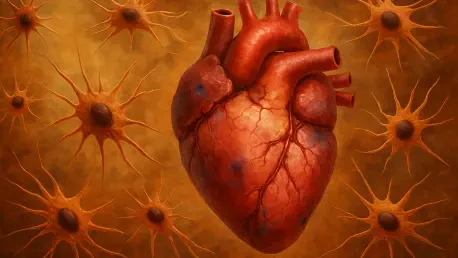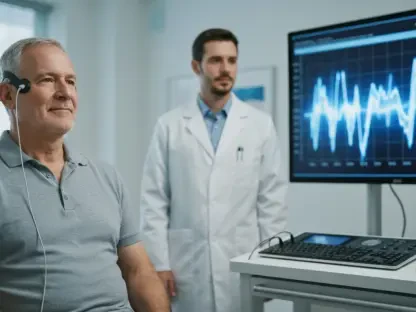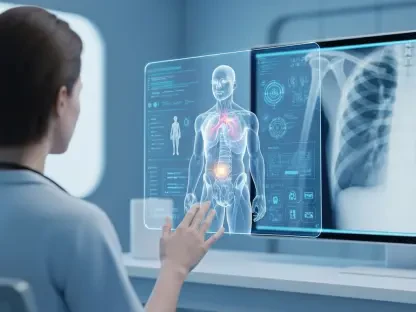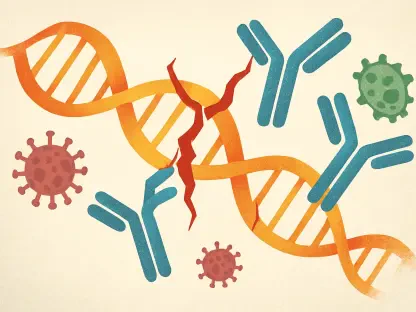Imagine a silent saboteur lurking within the heart, contributing to its decline in ways that have gone unnoticed for decades until now, as cardiac fibroblasts, once thought to be mere structural support in the heart’s complex architecture, are now revealed as active participants in the progression of heart failure (HF), a condition affecting millions worldwide with devastating consequences. This startling insight stems from cutting-edge research that challenges the foundational assumptions of cardiology, shifting focus from the heart’s muscle cells to these previously underappreciated players. Heart failure, marked by the heart’s inability to pump blood effectively, leads to symptoms like shortness of breath and fatigue, often culminating in severe outcomes. The notion that fibroblasts might hold a key to understanding and potentially slowing this disease opens a new frontier in medical science, prompting a reevaluation of how the heart’s cellular environment influences its overall health and function.
Unmasking a Hidden Contributor
The narrative of heart failure research has historically centered on cardiomyocytes, the muscle cells tasked with the critical job of pumping blood throughout the body. For years, therapeutic strategies and scientific inquiries have zeroed in on these cells, viewing their dysfunction as the primary driver of HF. However, a groundbreaking study recently published in a leading cardiovascular journal has turned this perspective on its head by spotlighting cardiac fibroblasts. Once dismissed as passive components that merely provide structural scaffolding, these cells are now understood to exert a detrimental influence on heart function. This revelation compels a broader examination of the heart’s cellular ecosystem, suggesting that the interplay between various cell types may be just as crucial as the performance of muscle cells alone. By recognizing fibroblasts as active agents in disease progression, researchers are beginning to piece together a more comprehensive picture of what goes wrong in a failing heart.
Equally compelling is the shift in focus that this discovery necessitates within the medical community. The traditional emphasis on cardiomyocytes has shaped drug development and treatment protocols for decades, often overlooking other cellular contributors. With evidence mounting that fibroblasts can exacerbate heart failure, there’s a pressing need to rethink clinical approaches. This isn’t merely an academic exercise; it’s a call to action for integrating new findings into practical solutions for patients. The understanding that these support cells can influence the heart’s performance underscores the complexity of HF as a condition not driven by a single factor but by a network of interactions. Such insights pave the way for innovative research directions, encouraging scientists to explore how other overlooked elements in the heart might also play roles in disease, ultimately aiming to improve outcomes for those grappling with this life-altering condition.
Decoding a Destructive Mechanism
At the core of this paradigm shift lies the identification of a specific subset of cardiac fibroblasts that actively contribute to the worsening of heart failure through a distinct molecular pathway. Researchers have pinpointed that in failing hearts, these fibroblasts express the Myc gene, which sets off a cascade known as the MYC–CXCL1–CXCR2 axis. This signaling mechanism involves the release of a chemokine called CXCL1 by fibroblasts, which then binds to CXCR2 receptors on cardiomyocytes, impairing their ability to contract effectively. The result is a weakened heart that struggles to meet the body’s demands, accelerating the downward spiral of HF. Both experimental models with mice and analyses of human cardiac biopsy samples have validated this pathway’s presence, with higher levels of MYC and CXCL1 detected in HF patients compared to healthy individuals, highlighting the clinical relevance of this harmful interaction.
Further deepening the significance of this finding is the realization of how fibroblasts communicate destructively with other heart cells. This isn’t a passive process but an active disruption, where the chemical signals emitted by fibroblasts directly undermine the heart’s core functionality. The specificity of the MYC–CXCL1–CXCR2 axis offers a clear target for intervention, distinguishing it from broader, less precise mechanisms previously studied. This molecular dialogue between fibroblasts and cardiomyocytes reveals a layer of complexity in heart failure that was previously obscured by a narrower focus on muscle cells alone. As this pathway’s role becomes clearer, it challenges researchers to consider how many other cellular conversations might be influencing heart health in ways yet to be discovered. Such insights are crucial for developing therapies that address the root causes of HF rather than merely alleviating its symptoms.
Exploring Therapeutic Horizons
The potential to transform heart failure treatment based on these findings is both profound and promising. In experimental studies using mouse models, inhibiting the MYC–CXCL1–CXCR2 pathway resulted in noticeable improvements in heart function, suggesting a viable target for new therapies. For countless individuals battling severe HF, where options are often limited to invasive procedures like heart transplantation, the prospect of a treatment that targets fibroblast signaling could be life-changing. This approach hints at a future where medical interventions tackle not only the heart’s muscle cells but also the damaging effects of support cells, potentially slowing the disease’s progression and enhancing patients’ quality of life. The hope is to reduce reliance on last-resort measures, offering a more manageable path forward for those affected.
Beyond immediate implications, this research sparks a broader conversation about the direction of cardiovascular therapy development. Targeting specific cellular pathways like the one identified in fibroblasts requires precision and innovation, pushing the boundaries of current medical technology. While the path from laboratory findings to clinical application is fraught with challenges, including ensuring safety and efficacy in human trials, the potential rewards are immense. This discovery could inspire a wave of new drugs designed to interrupt harmful cellular interactions, fundamentally altering how HF is managed. It also emphasizes the importance of personalized medicine, where treatments might one day be tailored to address the unique cellular dynamics at play in each patient’s heart. Such advancements could redefine standards of care, providing renewed optimism for millions grappling with this debilitating condition.
Redefining Heart Failure Research
A significant trend emerging from this research is the move toward a more holistic understanding of heart failure, recognizing it as a condition influenced by multiple cell types rather than a singular focus on cardiomyocytes. The growing consensus in cardiovascular science acknowledges that non-muscle cells like fibroblasts can profoundly impact cardiac performance, a perspective gaining traction as advanced molecular techniques reveal intricate cellular relationships. This broader viewpoint challenges decades of conventional thinking and highlights the necessity for therapies that address the full spectrum of cellular contributors to HF. It’s a pivotal shift, urging the scientific community to integrate these findings into a more comprehensive framework for studying and treating heart disease.
Moreover, this evolving perspective in cardiology signals a departure from traditional research silos, encouraging interdisciplinary collaboration to tackle the multifaceted nature of heart failure. As the role of fibroblasts becomes clearer, it prompts questions about other cellular players that might also influence disease outcomes. The push for innovative solutions is evident, as current treatments often fall short in addressing underlying mechanisms, leaving many patients to manage symptoms rather than halt progression. By embracing a wider lens, researchers can better design studies that capture the heart’s complex environment, potentially uncovering additional pathways for intervention. This redefined approach not only enriches scientific understanding but also holds the promise of more effective strategies to combat one of the world’s leading causes of death and disability, setting a new course for future advancements.
Charting the Path Forward
Reflecting on the journey of this research, it’s evident that the recognition of cardiac fibroblasts as active contributors to heart failure marked a turning point in cardiovascular studies. The identification of the MYC–CXCL1–CXCR2 axis as a driver of disease progression provided a fresh lens through which to view a long-standing medical challenge. Experimental successes in blocking this pathway in animal models offered a glimpse of hope, suggesting that the battle against HF could take on new dimensions. This shift toward understanding the heart’s diverse cellular landscape reshaped priorities, emphasizing that solutions must address more than just muscle cells to achieve lasting impact.
Looking ahead, the focus must turn to translating these insights into tangible benefits for patients. Future research should prioritize developing safe, effective therapies that target fibroblast signaling, while also exploring whether such interventions can aid those in earlier stages of heart failure. Collaboration across scientific and medical fields will be essential to overcome the hurdles of clinical application, ensuring that innovations reach those in need. Additionally, investing in technologies that allow for precise targeting of cellular pathways could accelerate progress. By continuing to unravel the heart’s hidden dynamics, the medical community can build on this foundation, striving toward a future where heart failure’s burden is significantly lightened through groundbreaking, comprehensive care.









